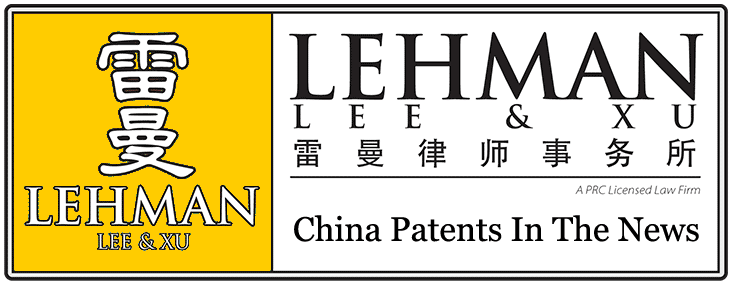[By Arthur Tan-Chi Yuan
]
[Author¡¯s note: Key lessons for non-Chinese litigants: Patent Reexamination Board, retroactive application of the third amendments to the Chinese patent law, standing, registered Chinese trademarks as evidence in invalidating Chinese design patents]
In a series of 7 cases before the Beijing First Intermediate People¡¯s Court, the Cincinnati-based company, The United States Playing Card Company (¡°USPC¡±), was dragged into a patent invalidation slugfest with a Chinese patentee over playing cards and play cards¡¯ casing. The USPC has been a winner in all these cases due to their timely filing of invalidation proceedings before the Patent Reexamination Board of the State Intellectual Property Office (¡°PRB¡±), as well as timely registration of their trademarks and clever litigation strategy.
One patent, please.
The case started when USPC decided to invalidate a total of 7 patents filed and owned by plaintiff of the lawsuit, Mr. Zeng Qingsong. The invalidation proceedings were before the PRB. In all 7 cases, the PRB invalidated the patents. The plaintiff thereafter sought judicial review of the PRB¡¯s administrative decisions.
Zeng filed 7 design patents in a span of about 3 months on playing card designs and designs on boxes housing the playing cards. These design patents are:
Design patent # |
Filing date |
Design |
200730316154.2 |
10/29/2007 |
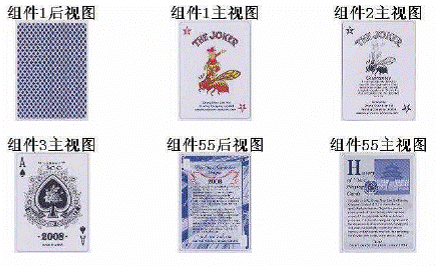
|
200730316153.8 |
10/29/2007 |
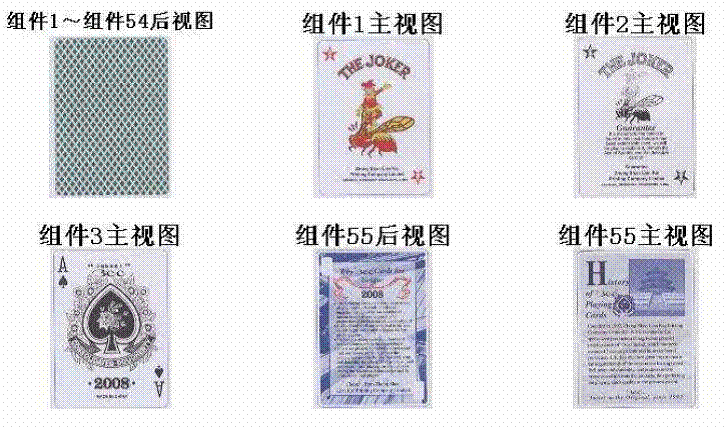
|
200730316152.3 |
10/29/2007 |
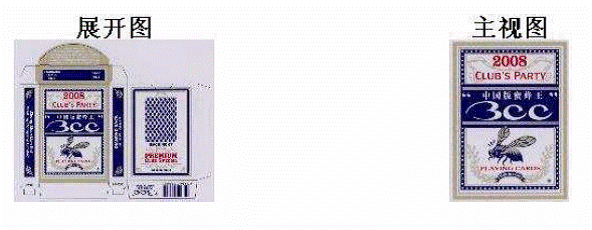
|
200730316150.4 |
10/29/2007 |
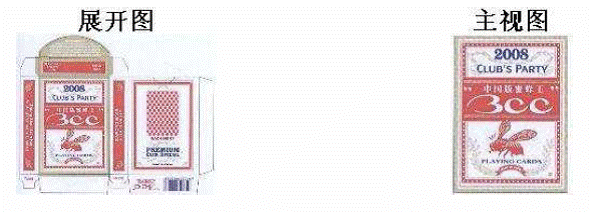
|
200730316151.9 |
10/29/2007 |
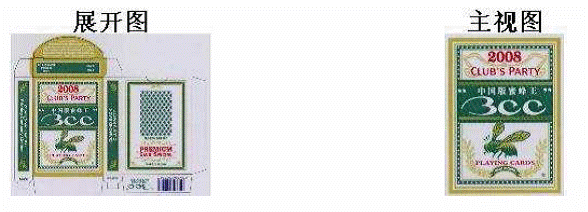
|
200730060715.7 |
7/27/2007 |
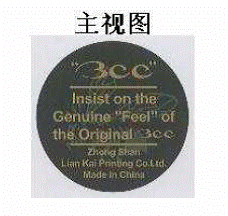
|
|
|
|
Table 1
From Table 1 above, Zeng received 3 design patents on the playing cards with July 24, 2007 as the earliest filing date among the the three (see 200730060301.4 patent). In addition, he also received 3 design patents on the box of the playing cards with all three patent applications filed on October 29, 2007.
There is a problem, however, with this approach. According to Article 13 of the Implementing Regulations of the Patent Law of China (¡°Regulations¡±) 2001:
For any identical invention-creation, only one patent right shall be granted.
Two or more applicants who respectively file, on the same day, applications for patent for the identical invention-creation, as provided for in Article 9 of the Patent Law, shall, after receipt of a notification from the Patent Administration Department under the State Council, hold consultations among themselves to decide the person or persons who shall be entitled to file the application (emphasis added).
Therefore, USPC argued before the PRB that Zeng¡¯s duplicated patents was a violation of Article 13 of the Regulations. So, if anything, Zeng should have only received 1 design patent on the playing cards: 200730060301.4 (¡°card patent¡±), and another design patent on the box of the playing cards: 200730316150.4 (¡°box patent¡±).
Zeng disagreed and argued that the 2001 Regulations are not applicable because USPC challenged his patents in the PRB on February 1, 2010. Instead, the new Regulations issued on January 9, 2010 and the new Patent Law of 2008 should be the governing law and regulations.
The Beijing First Intermediate People¡¯s Court (¡°Court¡±) readily rejected Zeng¡¯s argument because the new patent law of 2008 and the new Regulations of 2010 expressly stated that they apply to patent applications filed on or after the effective date of the law and the Regulation, which was October 1, 2009 and February 1, 2010, respectively. The patents in question were filed in 2007, which means the patent law of 2001 and the Regulations of 2001 were application. As such, the PRB correctly applied the right Regulations. As such, the invalidity decisions of the 4 patents were upheld.
Likelihood of confusion
Secondly, the USPC also argued that the three remaining patents were also invalid due to lack of novelty and inventiveness before the PRB. In support of its arguments, the USPC used its own registered Chinese trademarks as evidence. The USPC has registered two trademarks:
TM Registration # |
Filing date |
Mark design |
1222497 |
8/8/1997 |
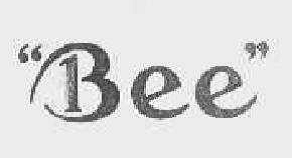
|
3214771 |
6/18/2002 |
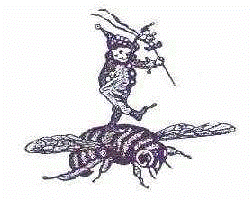
|
Table 2
The USPC thus argued that its registered trademarks were filed and published before the filing date of Zeng¡¯s two patents. In addition, although the joker figure and the bee in the card patent are facing in a different direction from that in the USPC¡¯s 3214771 trademark design, they are substantially similar and would cause a likelihood of confusion to the public as to the source of the product. Similarly, Zeng¡¯s box patent used texts ¡°3cc,¡± but they are written in a similar style that is close to the USPC¡¯s 1222497 trademark of ¡°Bee.¡±
Zeng argued otherwise, because there was no likelihood of confusion about the use of the joker figure on a bee and the word ¡°Bee.¡± In addition, patent rights and trademark rights are separate rights.
The PRB agreed with the USPC¡¯s arguments and invalided the patents. The Court affirmed the PRB¡¯s decision. In its affirmance, the Court found that Article 23 of the Patent Law of 2001 was dispositive:
Any design for which patent right may be granted must not be identical with or similar to any design which, before the date of filing, has been publicly disclosed in publications in the country or abroad or has been publicly used in the country, and must not collide with any legal prior rights obtained by any other person.
The Court found that, although there are differences in the design of Zeng¡¯s design patents, Zeng¡¯s design patents are similar to the USPC¡¯s registered marks, which was publicly disclosed in publications in China. And, Zeng¡¯s design patent rights are in conflict with the USPC¡¯s trademark rights, which were obtained legally prior to Zeng¡¯s.
Therefore, the USPC was successful in defeating the remaining 3 design patents by Zeng.
Thoughts:
- One would ask: "Why Zeng's duplicated patents were granted and issued in the first place?" The answers lie in that design patents in China have a lower standard of novelty and inventiveness.
- Also, a Chinese design patent has a term of 10 years from the date of filing (Article 42 of the Chinese Patent Law 2008), whereas a US design patent has a term of 14 years from issuance, not filing.
- Patent Reexamination Board is an administrative agency that handles all patent invalidation proceedings. If a party is dissatisfied with its ruling, the Beijing First Intermediate Court has the sole jurisdiction to hear the administrative appeal, or known as the ¡°administrative litigation¡± in China.
- This case clarifies the retroactive application of the third amendments to the Chinese patent law (2008) and the implementing regulations of the patent law of 2010.
- A minor issued raised by Zeng on appeal to the Court was that the USPC lacked standing to challenge the patents before the PRB because the USPC failed to submit documents showing its corporate legal status to the PRB on time. The PRB sustained Zeng¡¯s objection and accepted the documents because the USPC provided reasonable explanations: translation of corporate documents and certification by relevant entities were time-consuming. A practice tip: certification of these documents sometimes needs to go from Secretary of State, Department of State, US embassy in China, etc. Therefore, be sure to have these documents ready before you prepare to sue in China.
Web link:
http://chineseip.jmls.edu/sites/en/playing-winning-cards-chinese-patent-invalidation-appeals
|
